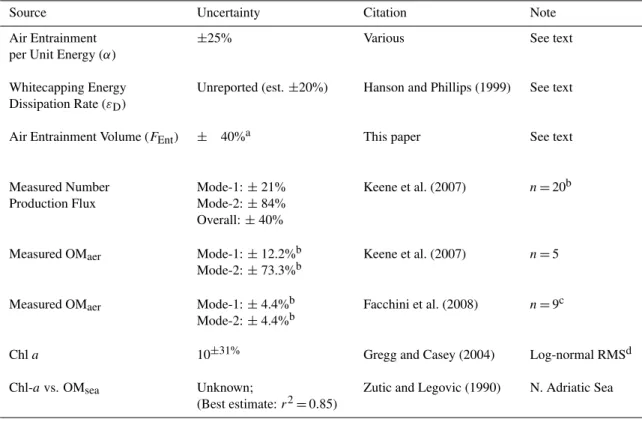A sea-state based source function for size- and composition-resolved marine aerosol production
Texto
Imagem




Documentos relacionados
aerosol chloride signal was observed during sea sweep experiments when the source of the aerosol chloride was NaCl present in artificially generated sea salt aerosols even though
In this study, we analyzed number concentration and size distribution of aerosol particles, together with the mass concentration and chemical composition of UFPs and PM 1
The WRF-Chem gas-phase chemistry and aerosol mod- ules were used to simulate aerosol concentrations and size distributions for July 2004 in the eastern United States so that we
Free amino acids in Antarctic aerosol: potential markers for the evolution and fate of marine aerosol..
So far no comprehensive studies investigating the chem- ical composition of aerosol particles in conjunction with measurements of a variety of trace gases were conducted in
The well- predicted aerosol quantities, such as aerosol number, mass composition and optical properties, and the inclusion of full aerosol-cloud couplings lead to
As an initial application of the κ -based lookup tables, and to test the role of the parti- cle size distribution and aerosol hygroscopicity, sensitivity simulations were carried
Aircraft – based measurements of aerosol hygroscopicity, both in the form of size- resolved, diameter growth factors and in the dependence of particle light scattering on


